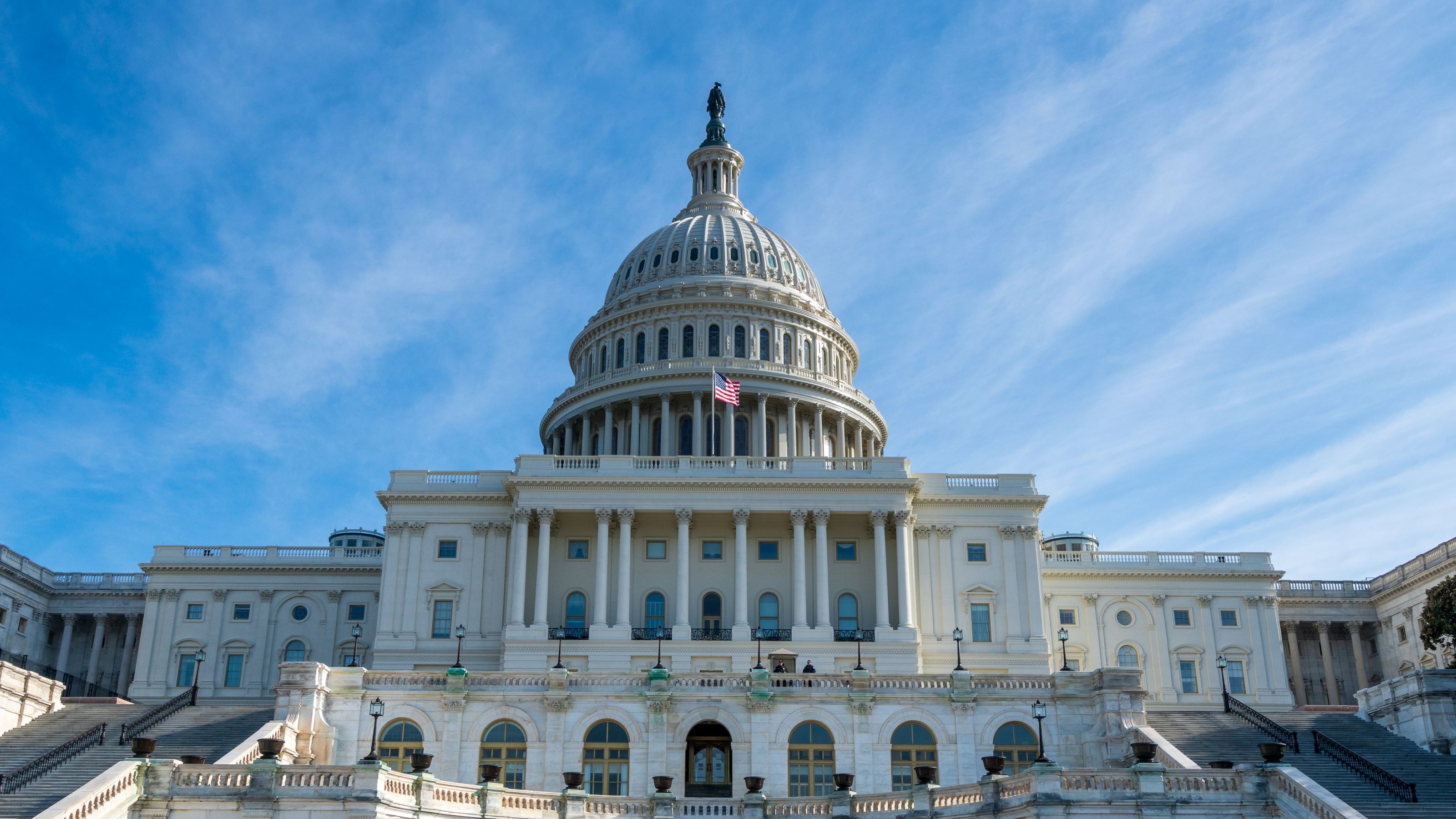The Extra Standard Deduction for People Age 65 and Older
The extra standard deduction can help older adults reduce their taxable income. Here's how.


You’ve probably heard about the standard deduction, but did you know that the tax code offers a perk in the form of an extra standard deduction for people aged 65 or older?
For eligible older adult filers, the additional deduction is applied on top of the regular standard deduction and can further reduce taxable income. That, in turn, can increase the amount of hard-earned money you keep in retirement.
Here’s more of what you need to know, including information about a new, but temporary, additional tax incentive for older adults included in the 2025 Trump/GOP tax overhaul.
From just $107.88 $24.99 for Kiplinger Personal Finance
Become a smarter, better informed investor. Subscribe from just $107.88 $24.99, plus get up to 4 Special Issues

Sign up for Kiplinger’s Free Newsletters
Profit and prosper with the best of expert advice on investing, taxes, retirement, personal finance and more - straight to your e-mail.
Profit and prosper with the best of expert advice - straight to your e-mail.
Key points
- Taxpayers 65 and older qualify for an additional standard deduction, reducing their taxable income.
- The extra deduction amount differs based on filing status and whether the taxpayer or spouse is blind.
- The IRS updates the deduction amounts annually for inflation, impacting tax filings.
- Eligible older adults can add the extra deduction to their regular standard deduction when filing taxes, potentially lowering their overall tax bill.
Overview
What’s the standard deduction?
Before delving into specifics about the extra standard deduction for older adults aged 65 and older, reviewing how the regular standard deduction works is helpful.
The standard deduction is a predetermined amount that reduces your taxable income, lowering the income subject to tax. In most cases, whether to take the standard deduction (which most taxpayers choose to do) is up to you. (However, some taxpayers cannot claim the standard deduction.)
The alternative is to itemize deductions, which involves claiming individual deductions on your federal income tax return. Common itemized deductions include things like mortgage interest and charitable donations.
The amount of your standard deduction depends on several different factors. For example:
- Your filing status
- Whether you are 65 or older
- Whether you are blind
- Whether another taxpayer can claim you as a dependent on their tax return
For 2025 (tax returns you will typically file by April 2026), the standard deduction amounts are $15,000 for single and for those who are married, filing separately; $30,000 for those married filing jointly and qualified widows; and $22,500 for head of household.
For more on the standard deduction, see: What’s the 2025 Standard Deduction?
Note: The IRS has recently released inflation-adjusted deduction amounts for 2026 (returns you'll typically file in 2027): For more information, see: Standard Deduction 2026 Amounts Are Here.
IRS extra standard deduction for older adults

When you turn 65, you become eligible for an additional standard deduction on top of the regular standard deduction.
However, the amount of this extra deduction can vary based on factors like filing status and whether you or your spouse are 65 or older. Whether you or your spouse is blind is another factor.
- For 2025, the additional standard deduction is $2,000 if you are single or file as head of household.
- If you're married, filing jointly or separately, the extra standard deduction amount is $1,600 per qualifying individual.
Note: Last tax year (2024), the additional standard deduction was $1,950 (single or filing as head of household). If you're married, filing jointly or separately, the extra standard deduction amount was $1,550 per qualifying individual. (More on that below)
If you are 65 or older and blind, the extra standard deduction for 2024 was $3,900 if you are single or filing as head of household. It's $3,100 per qualifying individual if you are married, filing jointly or separately.
For 2025, those amounts are $4,000 and $3,200, respectively.
2025 Extra Standard Deduction
Additional standard deduction 2025
Here are the IRS extra standard deduction amounts for 2025. (You'll use these numbers for tax returns typically filed in early 2026.)
Also, for more detailed information on the current amounts, see Tax Deduction Change for Those Over Age 65.
65 or older or blind | $2,000 |
65 or older and blind | $4,000 |
65 or older or blind | $1,600 per qualifying individual |
65 or older and blind | $3,200 per qualifying individual |
Note: For the additional standard deduction for people who are blind, you have to be completely blind by the end of a given tax year.
Or, you have to have a doctor's certification (in this case, an ophthalmologist or optometrist) that your eyesight is at least 20/200 (in the best eye with corrective lenses.)
Or, your doctor must certify that your field of vision is 20 degrees or less.
Planning: 2026 Amounts
If you're planning for 2026 retirement taxes, the IRS released the extra standard deduction amounts for returns normally filed in early 2027.
65 or older or blind | $2,050 |
65 or older and blind | $4,100 |
65 or older or blind | $1,650 per qualifying individual |
65 or older and blind | $3,300 per qualifying individual |
Claiming the extra standard deduction
As retirees tend to face rising medical and other expenses, the extra standard deduction for individuals 65 and older can help alleviate tax burdens by reducing taxable income. This boost may free up funds for essential needs, leisure activities, or to support loved ones.
If you are eligible to claim the extra standard deduction and aren’t sure how it impacts your tax liability, consult a trusted tax professional or official IRS resources to maximize your tax benefits.
Extra standard deduction vs. itemizing: Which is better?
There's no one-size-fits-all answer when deciding between taking the extra standard deduction and itemizing. The best choice depends on your financial situation and the specific tax credits and deductions you qualify for.
The extra standard deduction for those 65 and older can be a straightforward way to reduce taxable income without extensive record-keeping. This option might be particularly attractive for those who don't have substantial itemizable expenses or prefer a simpler tax filing process.
On the other hand, itemizing can be more beneficial if your qualifying expenses exceed the combined standard and extra standard deductions.
Common itemized deductions include medical expenses, mortgage interest, charitable contributions, and state and local taxes. If you have high medical costs or make substantial charitable donations, itemizing might result in greater tax savings.
However, itemizing requires strong record-keeping and sometimes complex tax preparation. Evaluate both options (with help from a trusted advisor if needed) and choose the one that lowers your tax liability the most.
'Senior Bonus Deduction'
A new $6,000 bonus deduction for those 65 and older
Trump’s 2025 tax and spending megabill contains a new “bonus” deduction for those age 65 and older.
The "bonus" provides an additional reduction in taxable income for eligible older adults — up to $6,000 — in addition to the existing extra standard deduction already available, subject to phase-outs at higher incomes.
Note: The bonus is also available to eligible older adult taxpayers who itemize deductions.
GOP lawmakers, who passed the reconciliation bill along party lines, said the goal of the bonus deduction is to ease the financial burden on retirees, many of whom have seen their savings stretched by inflation.
However, as Kiplinger has reported, the deduction boost comes with caveats.
- It is a temporary measure, effective only from 2025 through 2028, and is subject to income limits.
- The full benefit phases out for single filers with modified adjusted gross income (MAGI) above $75,000 and for joint filers with MAGI above $150,000. It completely phases out at $175,000 (single filers) and $250,000 (joint).
- While this targeted relief could make a difference for older adults with middle incomes, those with lower incomes who pay little or no federal income tax may see limited benefits, since deductions only reduce taxable income rather than directly lowering the tax bill. Those with high incomes might not be eligible for bonus relief.
President Trump signed the so-called 'big, beautiful bill" into law on July 4, 2025.
This article has been updated to include information about 2026 deduction amounts.
Related
Profit and prosper with the best of Kiplinger's advice on investing, taxes, retirement, personal finance and much more. Delivered daily. Enter your email in the box and click Sign Me Up.

Kelley R. Taylor is the senior tax editor at Kiplinger.com, where she breaks down federal and state tax rules and news to help readers navigate their finances with confidence. A corporate attorney and business journalist with more than 20 years of experience, Kelley has covered issues ranging from partnerships, carried interest, compensation and benefits, and tax‑exempt organizations to RMDs, capital gains taxes, and income tax brackets. Her award‑winning work has been featured in numerous national and specialty publications.
-
 Tip: Ways to Track Your Credit Card Rewards
Tip: Ways to Track Your Credit Card RewardsHere are the best strategies and apps to help you stay current with your credit card rewards.
-
 How New Investors Can Pick Their Perfect Portfolio, According to a Pro
How New Investors Can Pick Their Perfect Portfolio, According to a ProSee what Cullen Roche has to say about finding your perfect portfolio as a new investor and his two-word answer on where he thinks the stock market is headed in 2026.
-
 HNW Retirees: Don't Overlook The Benefits of Social Security
HNW Retirees: Don't Overlook The Benefits of Social SecurityWealthy retirees often overlook Social Security. But timed properly, it can drive tax efficiency, keep Medicare costs in check and strengthen your legacy.
-
 3 Major Changes to the Charitable Deduction for 2026
3 Major Changes to the Charitable Deduction for 2026Tax Breaks About 144 million Americans might qualify for the 2026 universal charity deduction, while high earners face new IRS limits. Here's what to know.
-
 Retirees in These 7 States Could Pay Less Property Taxes Next Year
Retirees in These 7 States Could Pay Less Property Taxes Next YearState Taxes Retirement property tax bills could be up to 65% cheaper for some older adults in 2026. Do you qualify?
-
 Estate Tax Quiz: Can You Pass the Test on the 40% Federal Rate?
Estate Tax Quiz: Can You Pass the Test on the 40% Federal Rate?Quiz How well do you know the new 2026 IRS rules for wealth transfer and the specific tax brackets that affect your heirs? Let's find out!
-
 5 Types of Gifts the IRS Won’t Tax: Even If They’re Big
5 Types of Gifts the IRS Won’t Tax: Even If They’re BigGift Tax Several categories of gifts don’t count toward annual gift tax limits. Here's what you need to know.
-
 The 'Scrooge' Strategy: How to Turn Your Old Junk Into a Tax Deduction
The 'Scrooge' Strategy: How to Turn Your Old Junk Into a Tax DeductionTax Deductions We break down the IRS rules for non-cash charitable contributions. Plus, here's a handy checklist before you donate to charity this year.
-
 Tax Refund Alert: House GOP Predicts 'Average' $1,000 Payouts in 2026
Tax Refund Alert: House GOP Predicts 'Average' $1,000 Payouts in 2026Tax Refunds Here's how the IRS tax refund outlook for 2026 is changing and what steps you can take now to prepare.
-
 New IRS Changes to FSA Contribution Limits for 2026: What to Know
New IRS Changes to FSA Contribution Limits for 2026: What to KnowHealth Care Flexible Spending Accounts have tax advantages worth looking into, especially in light of new IRS changes.
-
 Is a New $25,000 Health Care Tax Deduction Coming in 2026?
Is a New $25,000 Health Care Tax Deduction Coming in 2026?Tax Policy A proposal from GOP Sen. Josh Hawley adds to the chatter about health care affordability.